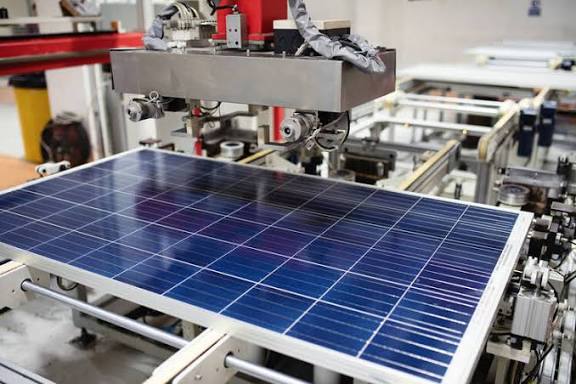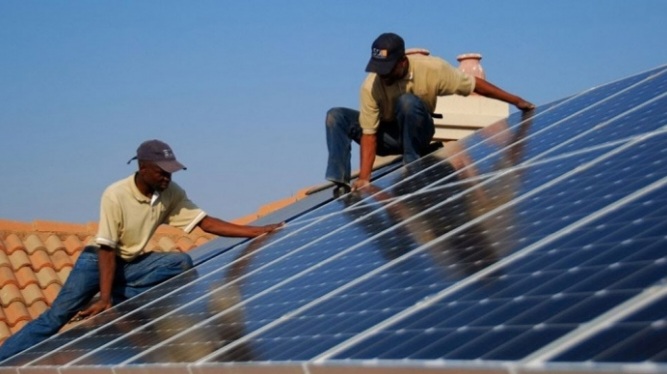10 Secrets Manufacturers Don’t Want Installers to Know About solar panel Efficiency
The Efficiency Myth No One Talks About
If you’ve been in the solar industry for a while, you’ve probably noticed this:
Manufacturers love to talk about solar panel efficiency percentages, but rarely about real-world performance.
They’ll print numbers like “22.5% efficiency!” or “400W panel output!” in bold — but those figures are based on perfect lab conditions, not the rooftops we work on every day.
In the field, things are different. Heat, dust, wiring losses, shading, and even installation angles can dramatically change how a panel performs.
In this post, I’ll reveal the real-world secrets manufacturers don’t want installers to know about PV efficiency, and how you can use this knowledge to design systems that outperform the “official specs.”
☀️ 1. The Efficiency Rating Is a Lab Number — Not a Field Promise
Panel efficiency ratings (like 20% or 22%) are tested under Standard Test Conditions (STC) — exactly 1,000 W/m² sunlight, 25°C temperature, and 1.5 air mass.
That’s an ideal environment you’ll almost never see on a rooftop.
In the real world, panels operate at 40–60°C or more — and efficiency drops by 0.3–0.5% per °C above 25°C.
So that 400W panel? On a hot day, it might only deliver around 360–370W.
Takeaway: Always explain to clients that rated power ≠ real power. Manage expectations based on real conditions.

🔋 2. Temperature Coefficient Is the Hidden Efficiency Killer
Every panel has a temperature coefficient, usually written as “-0.35%/°C” or similar.
That small number determines how much performance you lose per degree above 25°C.
Example:
If your 400W panel has a -0.4%/°C coefficient and it’s operating at 45°C, you lose about:
(45 – 25) × 0.4% = 8% efficiency loss
Manufacturers highlight the efficiency rating, but rarely emphasize this number.
Smart installers always check it.
Pro tip: When comparing panels, prioritize a lower temperature coefficient over a slightly higher wattage. It performs better long-term, especially in tropical climates.
⚡ 3. Wiring and Connection Losses Are “Invisible” on Paper
Manufacturers’ test results assume zero wiring loss — but real installations lose 2–5% of power through cables, connectors, and joints.
The longer the run, the greater the voltage drop.
Field tip:
- Use thicker cables for long DC runs.
- Keep connections tight and corrosion-free.
- Use MC4 connectors from reputable brands.
Your wiring choices directly affect system efficiency, even if the panels themselves are perfect.
To avoid undersizing, use a professional load and system calculator like Globisun — it automatically adjusts for cable loss and helps you size panels accurately.
🧠 4. “High Efficiency” Doesn’t Always Mean “Best Choice”
Here’s a little secret: A 22% efficient panel isn’t always better than a 19% one.
Why? Because efficiency only measures how much power is produced per square meter, not total performance in your location.
If your roof space is limited, sure — go for high-efficiency panels.
But if you have ample space, a slightly lower-efficiency but lower-cost panel can deliver the same energy output at a better ROI.
Takeaway: Focus on system efficiency, not just panel specs.
🌤️ 5. Dirt and Degradation Are Understated
Manufacturers claim that panels degrade only 0.5% per year, but real-world conditions often double that — especially in dusty or coastal areas.
Pollution, bird droppings, and salt mist speed up degradation and cut output.
And while they might advertise “self-cleaning glass,” no panel cleans itself in harmattan season.
Pro tip:
- Educate clients about regular cleaning and maintenance.
- Offer cleaning services or maintenance contracts.
Clean panels = consistent performance.
⚙️ 6. Partial Shading Affects More Than You Think
Manufacturers often skip the real impact of partial shading — especially when panels are connected in series.
One shaded cell can reduce the entire string’s performance by 30–50%.
Bypass diodes help, but they don’t eliminate losses entirely.
To minimize this:
- Perform a full shading analysis during your site assessment.
- Consider microinverters or power optimizers for roofs with uneven shading.
- Always face panels for maximum exposure during peak sun hours.
Tools like Globisun can assist with solar sizing and system design, factoring in location-based sun hours.
🔋 7. Inverter Conversion Efficiency Isn’t Constant
Inverter specs might boast “98% efficiency,” but that’s under ideal load conditions.
At low loads (like early morning or evening), efficiency can drop to 90% or less.
Smart sizing matters:
Match inverter capacity to the expected load range — not too big, not too small.
Pro tip: For hybrid systems, choose inverters with dynamic MPPT tracking and adaptive load management — they help balance power delivery more efficiently.
💡 8. Panel Mismatch Is a Silent Performance Killer
Mixing different panel models or brands in one array can cause mismatch losses — even if the wattage ratings seem close.
That’s because current and voltage outputs vary slightly between manufacturers.
Takeaway:
Always use panels from the same batch and brand.
If you must mix, use parallel connections or microinverters to reduce mismatch effects.
🧾 9. “Up to” Ratings Are Marketing Traps
Whenever you see “up to 450W” or “up to 22% efficiency,” read between the lines.
That “up to” means under perfect, controlled lab conditions — not in your client’s backyard.
Real installers know the difference between brochure talk and rooftop reality.
That’s why load calculations and solar sizing tools like Globisun are so valuable — they show what a system will actually deliver based on real-world conditions.
🌎 10. The Biggest Secret: System Design Beats Panel Specs
Here’s the truth manufacturers won’t advertise — your system design has more impact on performance than the panel itself.
Perfectly aligned panels, optimal tilt angles, proper cable runs, and smart inverter selection can boost performance by 10–20%, even with mid-range panels.
In other words:
A smartly designed 3kW system will outperform a poorly designed 4kW system every time.
Pro tip: Focus on design precision, not just panel specs. Use the Globisun App for accurate solar sizing, tilt suggestions, and real-time configuration support in the field.
Conclusion: Know the Truth, Build Smarter Systems
Manufacturers aren’t lying — they’re just not telling the whole story.
Real-world PV efficiency depends on temperature, shading, wiring, inverter design, and maintenance — not just a printed number on a datasheet.
As installers, the more we understand what’s behind the specs, the better we can design, educate clients, and deliver reliable systems.
So next time a panel claims “22% efficiency,” smile — because you know the real secret:
Efficiency isn’t found on paper. It’s built on the roof.
And with tools like Globisun, you can calculate, size, and design every system for real performance — not just rated performance.






